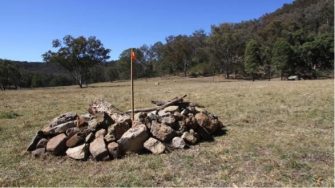
Synopsis
The study of island biogeography has examined the properties of islands—such as size and isolation—and how they affect ecological processes such as colonisation and species diversity. While island biogeography theory originally focused on explaining processes affecting the formation of faunal and floral assemblages on oceanic islands, its concepts are generally applicable to any situation in which patches of habitat are isolated from potential source populations.
Aims
In this project, the honours student will focus on two island sizes (large versus small) placed with replication at two different island distances from a colonizing source population (near versus far). These habitat “islands” have been purposely built in open grassland adjacent to remnant forest at a site in the NSW Central Tablelands. There are numerous potential projects available. For example, how the size of habitat fragments and their distance from a colonising source population determines colonisation rates and ultimately species diversity, or how various environmental disturbances applied as part of the experimental design impact island biodiversity. Other projects might consider the interaction of food webs and trophic guilds on how communities are formed and persist on islands.
Student benefits
- Learn the skills of quantifying species abundance.
- Gain or extend existing experience in conducting field work.
- Exploit an existing long-term ecology data set.
- Learn to identify invertebrates and small vertebrates.
- Understand the impact of habitat connectivity and size on community resilience.
